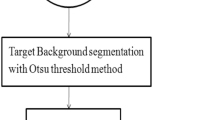Abstract
Ship detection has been a very significant proposal that is recently being researched extensively due to its very wide application and help. Ship detection is the one which helps in handling several issues that endangers the ocean security based on of several grounds. Ship detection is included in the object segmentation and detection problem that requires the aid of computer vision to preprocess and process the satellite images. The whole process is treated differently by humans and computers which makes the process complex. It is because the later treats the images as number matrix. Hence, this paper tries to propose steps to solve the issue using deep learning and convolutional neural network that works toward achieving excellent accuracy as compared to the state-of-the-art method. This not only helps us detect an object in the homogenous background but also aids us immensely in object detection and processing among the heterogeneous background. This paper has achieved this using the Keras model which is a good accurate satellite image analysis tool. It can precisely detect the ships in the mid-seas. Datasets are collected from the Kaggle Ship Detection Challenge. Here we take the dataset which consists of image chips extracted from Planet satellite imagery collected over the San Francisco Bay area. This analysis would help us control the exploitation of the sea’s resources. The need of guaranteeing sustainable sea exploitation with the likes of fishing, coral extractions, artifact explorations is essential.
Access this chapter
Tax calculation will be finalised at checkout
Purchases are for personal use only
Similar content being viewed by others
References
J.S. Thanakumar, R.S. Edwin, J. Sasikala, J.D. Sujitha, Smart Vessel detection using deep convolutional neural network, in 2018 Fifth HCT Information Technology Trends (ITT) (2018)
R.J. Richa, Smart Ship Detection using Transfer Learning with ResNet (2019)
Z. Shao, W. Wu, Z. Wang, W. Du, C. Li, SeaShips: a large-scale precisely annotated dataset for ship detection. IEEE Trans. Multimed. (2018)
C. Zhu, H. Zhou, R. Wang, J. Guo, A novel hierarchical method of ship detection from spaceborne optical image based on shape and texture features. IEEE Geosci. Remote Sens.Lett. 48(9), 3446–3456 (2010)
S. Sheng, J. Ma, J. Lin, et al., Unsupervised ship detection based on saliency and S-HOG descriptor from optical satellite images. IEEE Geosci. Remote Sens. Lett. 11(3), 641–645 (2014)
K. Eldhuset, An automatic ship and ship wake detection system for spaceborne SAR images in coastal regions. IEEE Trans. Geosci. Remote Sens. (1996)
W. Huo, Y. Huang, J. Pei, Q. Zhang, Q. Gu, J. Yang, Ship detection from ocean sar image based on local contrast variance weighted information entropy. Sensors (2018)
A Gentle Introduction to Transfer Learning for Deep Learning by Jason Brownlee on December 20, 2017
An Overview of ResNet and its Variants by Vincent Fung
S.I. Joseph, J. Sasikala, D.S. Juliet, Detection of ship from satellite images using deep convolutional neural networks with improved median filter, in Artificial Intelligence Techniques for Satellite Image Analysis (2020)
A. Voulodimos, N. Doulamis, A. Doulamis, E. Protopapadakis, Deep learning for computer vision: a brief review. Comput. Intell. Neurosci. (2018)
S. Ioffe, C. Szegedy, Batch normalization: accelerating deep network training by reducing internal covariate shift (2015)
Z. Zuo, B. Shuai, G. Wang, X. Liu, X. Wang, B. Wang, Y. Chen, Convolutional recurrent neural networks: learning spatial dependencies for image representation, in Proceedings of the IEEE Conference on Computer Vision and Pattern Recognition Workshops (2015)
V. Iglovikov, S. Mushinskiy, V. Osin, Satellite imagery feature detection using deep convolutional neural network: a kaggle competition (2017)
B. Kartikeyan, A. Sarkar, K.L. Majumder, A segmentation approach to classification of remote sensing imagery. Int. J. Remote Sens. 19(9), 1695–1709 (1998)
J. Rogan, D. Chen, Remote sensing technology for mapping and monitoring land-cover and land-use change. Progr. Plan. 61 (2004)
K. Simonyan, A. Zisserman, Very deep convolutional networks for large-scale image recognition (2014)
T.N. Hannevik, Ø. Olsen, A.N. Skauen, R. Olsen, Ship detection using high resolution satellite imagery and space-based AIS, in 2010 International WaterSide Security Conference (2010)
A. Bauer, J. Ball, J. Colmer, S. Orford, S. Griffiths, J. Zhou, Combining computer vision and deep learning for high-throughput aerial phenotypic analysis in wheat pre-breeding
J.A. Carballo, J. Bonilla, M. Berenguel, J. Fernández-Reche, G. García, New approach for solar tracking systems based on computer vision, low cost hardware and deep learning. Renew. Energy (2019)
F. Hu, G.S. Xia, J. Hu, L. Zhang, Transferring deep convolutional neural networks for the scene classification of high-resolution remote sensing imagery. Remote Sens. (2015)
Y. Chen, J. Zheng, Z. Zhou, Airbus ship detection-traditional versus convolutional neural network approach
K. Kang, W. Ouyang, H. Li, X. Wang, Object detection from video tubelets with convolutional neural networks, in Proceedings IEEE Conference in Computers Vision and Pattern Recognition (2016), pp. 817–825
X. Wang, A. Shrivastava, A. Gupta, A-fast-RCNN: hard positive generation via adversary for object detection, in Proceedings IEEE Conerence in Computers Vision and Pattern Recognition (2017), pp. 3039–3048
S. Ren, K. He, R. Girshick, J. Sun, Faster R-CNN: towards real-time object detection with region proposal networks, IEEE Trans. Pattern Anal. Mach. Intell. 39(6), 1137–1149 (2017)
K. Alex, et al., ImageNet classification with deep convolutional neural networks. Neural Inf. Process. Syst. 1097–1105 (2012)
Author information
Authors and Affiliations
Corresponding author
Editor information
Editors and Affiliations
Rights and permissions
Copyright information
© 2021 Springer Nature Singapore Pte Ltd.
About this paper
Cite this paper
Apoorva, A., Mishra, G.K., Sahoo, R.R., Bhoi, S.K., Mallick, C. (2021). Deep Learning-Based Ship Detection in Remote Sensing Imagery Using TensorFlow. In: Patnaik, S., Yang, XS., Sethi, I. (eds) Advances in Machine Learning and Computational Intelligence. Algorithms for Intelligent Systems. Springer, Singapore. https://doi.org/10.1007/978-981-15-5243-4_14
Download citation
DOI: https://doi.org/10.1007/978-981-15-5243-4_14
Published:
Publisher Name: Springer, Singapore
Print ISBN: 978-981-15-5242-7
Online ISBN: 978-981-15-5243-4
eBook Packages: EngineeringEngineering (R0)




